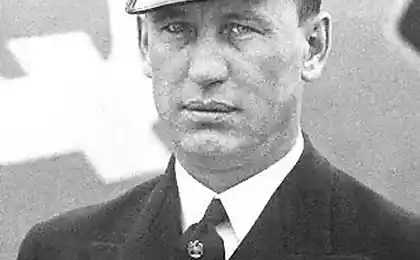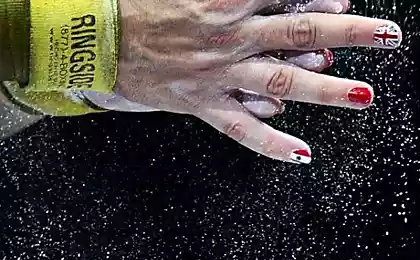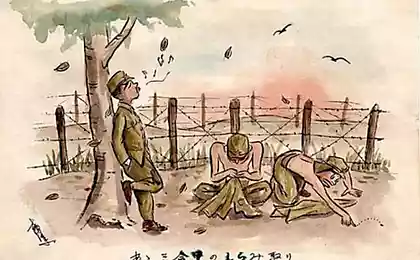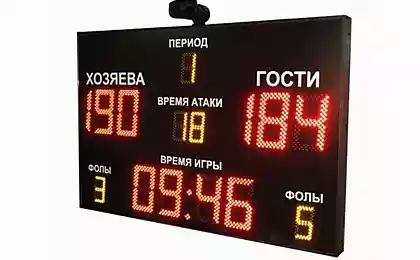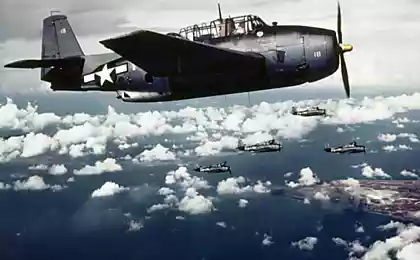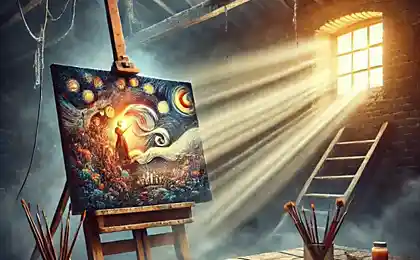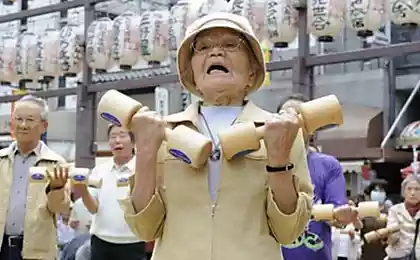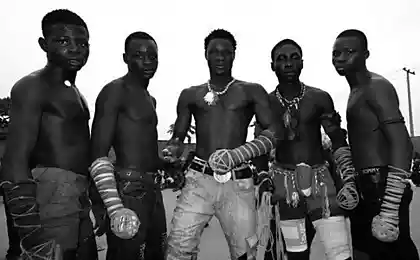2276
Japanese martial arts (25 photos)
Japanese martial arts, "Budo", which literally means "the way of combat," "Bujutsu" has no literal translation but means something like science, art or craft of war.
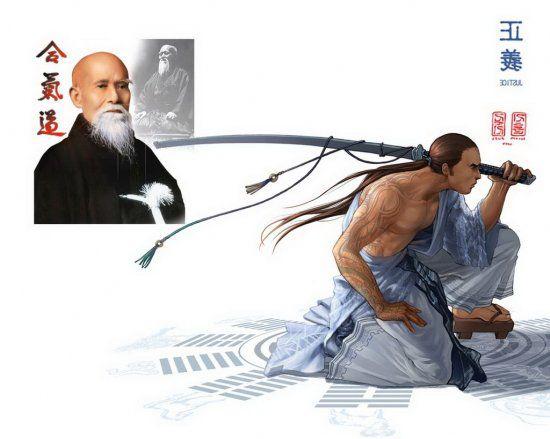
Currently, Japanese Budo and Bujutsu words without much of a difference in the sense used to refer to a wide range of skills needed in the martial arts, to fight without weapons possession to the instruments resembling a sword or spear. But in the Edo period (XVII - the middle of the XIX century) Bujutsu and Budo words have quite different implications. Bujutsu called methods of warfare, and budo meant "the military option", the ideal way of life that must lead samurai wielding technique Bujutsu.
Fragment of Shinkage Ryu Heiho Mokuroku that opens the secret techniques of style sword Shinkage-Yagyu
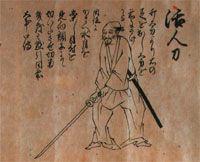
Competitions in archery in Sandzyusengendo, Kyoto.
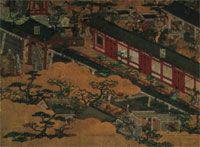
In those days there were 18 martial arts (Bugei jūhappan), which included archery, horsemanship, possession of knives, throwing spears, self-defense without weapons (jujutsu) and the gun strelbu.Praktika Bujutsu originated in antiquity. By the middle of the Heian period (X-XI cc.) Was born military class for the protection of newly acquired land and agricultural interests. This class of warriors took Bujutsu as part of their culture. Later in the Kamakura period (1192-1333 gg.), The military began to play a political role. They were engaged in a number of martial arts, especially the three types of horseback archery: kasagake (using umbrellas as targets), yabusame (transmission of the arrows on wooden targets), and Inu-Aumont (shooting at fleeing dogs).

In the Muromachi era (about 1333-1568 gg.) Bujutsu masters, who were called hёhomono or heyhodzin used his military experience, studying and perfecting the technique of martial arts. They have developed a number of new styles (called Ryu), for example, Ogasawara Ryu - horseback archery, Hackee Ryu - archery, Otsubo Ryu - horse riding and Aysukage Ryu - military strategy.
A number of other martial arts styles developed during the civil unrest, which lasted from the mid XV to the end of the XVI century. They included Tsuda-ryu - the gun shooting, Takenouchi-ryū - fight without weapons, and Kasimasinto Ryu Ryu Shinkage and Itto-ryu, which were based, respectively, Tsukahara Bokuden, Kamiidzumi Nobutsuna and Ito Ittosay to fight with swords.
Since the Edo Shogunate in the early XVII century united the country, followed the union of stability weakened the military spirit Bujutsu. Martial arts technique was improved through training, which mainly focus on kata (forms-or formal motions). It was believed that they will help to achieve the perfect state of mind based on the teachings of Confucius and Zen. Thus, the practice of martial arts has evolved from a simple study of the movements that helped master the fighting techniques, to strict training, promote a healthy spirit in a healthy body. In other words Bujutsu turned into Budo, which included and philosophy, supports the idea of a certain lifestyle. At a time when the samurai had to master the art of the pen as well as the art of the sword, budo was the ideal towards which the military class ought to strive.
Two famous styles possession of knives were Shinkage-Yagyu-ryu based Yagyu Muneёsi and Niteniti Ryu, Musashi Miyamoto developed. First school favored Tokugawa family, which at that time dominated the politics, it studied himself Shogun, Tokugawa Iemitsu.
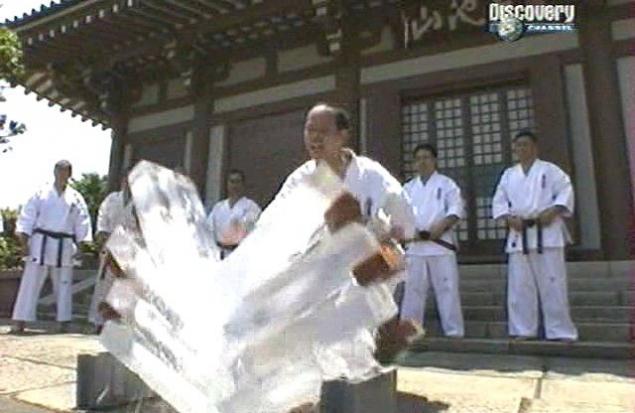
Basic principles of swordsmanship were described in books such as Yagyu Munenori Heiho Kadensё (son Muneёsi) and Gorin but Sho Miyamoto Musashi. These classic textbooks explain the techniques of sword and describe the ideal state of mind and philosophical view, which should reach those who wields a sword.
By the middle of the Edo period (the end XVII - the middle of the XVIII century) over a long period of peace swordsmanship took the battlefield and become a practice ornate formal exercises. New schools in response to this situation, the emphasis shifted to exercise kata forms for training in the martial forms using chainmail and wooden swords (shinai). Two of these schools were Dzikisinkage Ryu Nakanishi Itto-ryu.
Self-portrait of the famous master of the sword Miyamoto Musashi.
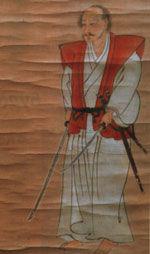
The desire for political change and pressure from foreign governments lit a spark revival Bujutsu, which began with the end of the XVIII century. Soon STAP teach martial arts in schools, based in the feudal estates across the country. With the collapse of the Shogunate collapsed and strict class distinctions that allowed men to seize the sword, by birth does not belong to the samurai class. Dojo in different cities opened their doors to people from all over Japan who want to study Sintomunen Ryu Hokusin-Itto-ryu and other styles of swordsmanship. Organized competition in which opponents were different Ryu.
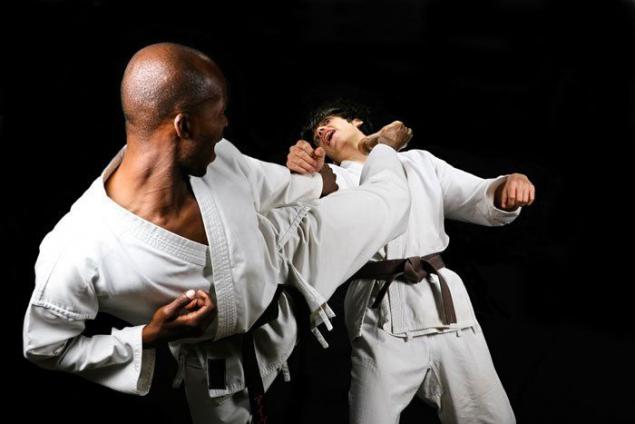
Engaged and Jujutsu (the art of fighting without weapons). Some of the famous schools existed -Takenouti Ryu, Kito-Ryu and Sekiguchi Ryu Ryu Esin. All schools professed ideal expressed in the phrase "Ju, ёku th of Sais," which can be translated as: "The weak can overcome the strong." Archery (Kyūjutsu) was the first martial art, has turned into a contest. Night and day competition was held on a long veranda Sanjusangendo temple in Kyoto. Archers stood at one end of the porch width of 2, 2 meters and shot arrows at a target at the other end, a distance of about 120 meters. This competition taken seriously because of the results depended on the honor fiefdoms archer. According to surviving records one of the retainers of the daimyo Tokugawa Kishu, Vasa Dayhatiro, could be sent to the far end of the veranda 8133 arrows with a total of 13 shots 053. This is a surprisingly high percentage, considering what a huge force is needed to release the arrow almost horizontally, so that it does not hit the ceiling height of 5 meters verandas. The best archers of the day it is difficult to hit the target even once.
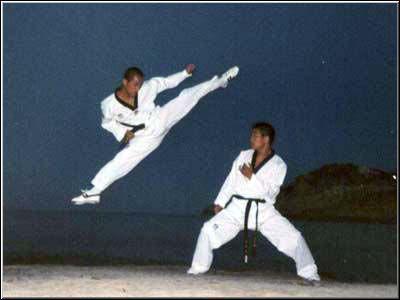
Martial Arts in their sporting aspect
At the beginning of the Meiji era (1868-1912 gg.) Budo and Bujutsu almost disappeared. But in 1895 during a nationwide effort to revive the martial spirit was an association called Dai-Nihon-kai Butoku. Built in 1905, the school teacher training martial arts eventually became a school of martial arts. By 1882 Jigoro Kano had already established his own style of judo - - Kodokan, giving it a form of sport, based on traditional principles of jujitsu. Over time, kendo and judo introduced into school curricula, and in 1931 they became mandatory subjects for boys across the country. During the Second World War, the spread of budo in the school system was part of a campaign to introduce a militaristic nationalism. Budo ideals encouraged in military training.
At the end of the war, Japan was occupied by the Allies. Martial arts were banned in order to avoid a new upsurge of militarism. But since the 50s martial arts again introduced into school curricula and become a popular sport. Budo also attracted attention as a traditional sport discipline, developing and ma ki that contribute to such a state of mind in which the physical and mental sensations are in harmony with each drugom.Dzyudo - Competitive most of all disciplines. She became an Olympic sport and has many followers around the world. Kendo also gained international recognition, though his true goal is not to win but to promote & quot; the development of a healthy mind in a healthy body. & quot; Some schools - Aikido Shorinji Kempo and other ancient martial arts - not allowed to die tradition, promoting the practice of formal kata, other -more accentuate its military aspects. Workshops techniques of one of these schools, Daito-ryu Aikibujutsu Sagawa-ha, based Sagawa Yukiyoshi, - a combination of various Japanese martial arts (such as kendo, judo, spear and stick), they contribute to the manifestation of the essence of Japanese martial iskusstv.Kak see for many years martial arts developed as part of the Japanese culture and were influenced by the political events of his time. The most valuable aspect of Japanese martial arts - their ability to promote the comprehensive development of man through exercise, leading to mastery honed skills workshops, which are based on respect for the tradition, the years of creative thinking and creative action.
A wide variety of martial arts Kendo
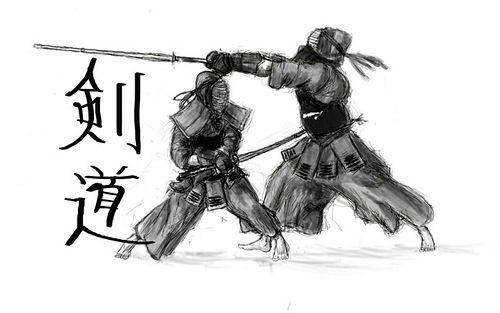
Kendo - it is also a competitive sport. Bamboo "sword" (Sinai), the length of which is not more than 118 cm, rivals strike each other blows in certain areas, for which points are added. Used four types of protective devices - Maine (mask) to (breastplate), kote two (guards hand) and tare (thigh protector). Like fencing in Europe, the ancient Japanese art of swordsmanship today continues to live, becoming a sport. Fencers hold rapier in one hand, while in Kendo, usually both hands hold the Sinai. Kendo as popular in Japan as judo, it takes about two million people. As judo, he taught at the school, they are often engaged in outside school hours. International Kendo Federation was founded in 1970 and is now outside Japan Kendo takes about eight million people.
Judo

In 1882 Jigoro Kano developed Judo based on the ancient art of jujutsu. Judo - a form of fighting without weapons, in which victory can be achieved, for example, throwing the opponent, pinning him on the shoulder, caught on hold or by submission. The biggest difference from judo dzyudeyutsu is that jujutsu allowed pushes and punches and kicks, while in judo they are banned as dangerous activity.
Judo became an Olympic sport in 1964, in time for the 1964 Olympic Games in Tokyo. In Japan, about 1, 5 million people have given category in judo, but only in the world of judo involved more than 20 million people. Battojutsu (outcrop of the sword). Also called iaydzyutsu. One of ordinary movements consisted kenjutsu to instantly pull the sword out of its sheath and swing it in a cutting motion. This technique is being followed by many schools, for example, Hayashizaki Muso-ryu, which developed during the civil unrest. These schools still exist, and the school also taught kenjutsu this kind of exposure of the sword. In practice today, a real sword pererubaet exactly half a bunch of straw or a piece of bamboo, or perform a series of fluid movements with the sword. They say that the master can cut the half iron shlem.Dzёdzyutsu (cane)

Round cane is made of white oak, its length is about 128 cm. She lunges as a spear, side sweeps the legs as naginata or a strike like a sword. It developed in the Edo period as a way to defend against an opponent armed with a sword or other weapon without injuring him fatally.
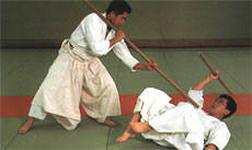
Well known school Stdomuso-ryu, which still exists in Fukuoka Prefecture, she is undoubtedly the greatest number of fans. Of all the ancient bujutsu most popular is jojutsu. The police, with some modifications, adopted a style of ownership cane Sindomuso Ryu.
Kenjutsu
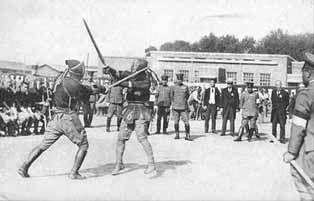
Kenjutsu or Japanese swordsmanship was born about 1200 years ago with the advent of the warrior class. In the Edo period there were more than 300 styles of kenjutsu. One of them, Kasimasin Ryu, now almost a thousand followers, they are also involved in overseas dojo. Many styles have already disappeared.
Japanese law prohibited from owning a Japanese sword as a weapon, so the workouts are used oak or bamboo swords about one meter long. Some bamboo swords covered with skin.
Shorinji Kempo
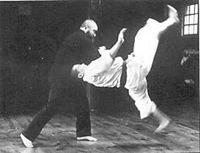
With Mitiomi learned fighting techniques, invented by Chinese soldiers, monks Zen Buddhist Shaolin Temple, and then, after World War II, developed these techniques into a new kind of martial arts. Apply sophisticated techniques that combine kicking and push. In training, protective devices are used, often used kontrpriёmy response. At competitions athletes wear apparel Zen Buddhist monks (as this practice is considered to be part of the training of Zen), and only show the form of kata. Shorinji Kempo takes about 1.3 million Japanese people and 150 thousand people in other countries.
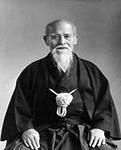
Aikido
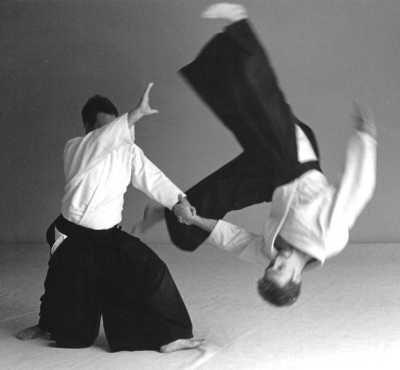
Aikido Ueshiba Morihei codified in 1922, based on Daito Aiki, one of jujutsu systems. The goal - to repel an attack, using its own power hitter. Many techniques are very complex and include the seizure of a brush, shoulder or other joint lock on an opponent in protivohode followed by cast or by pressure on the blades. Such techniques can be dangerous, so they practiced in training as prescribed. Competitions are rare.
Aikido is popular among women and the elderly, as is the art of protection does not require great strength. About 600 thousand people are engaged them in Japan and abroad, he has more 1.2 million followers.
Karate
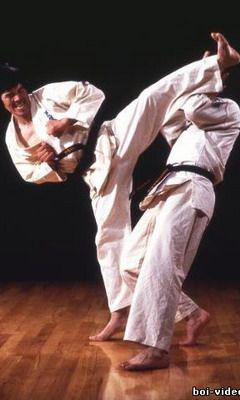
In karate there techniques of attack and defense techniques. Methods of attack include lunges brush, fist and foot, as well as punches and kicks. They reflect the techniques of protection. Competitions are held either as a series of kata forms demonstrating various techniques, either as free sparring. In some schools of karate kata is not practiced.
Karate originated as a style of Chinese boxing, and on Japanese soil has developed in Okinawa. Up until recent times they engaged only in Okinawa, then after the Meiji Restoration (1868), it has spread throughout Japan, and then, after World War II and in other countries. In karate over 3 million followers in Japan and another 30 million worldwide.
Naginata
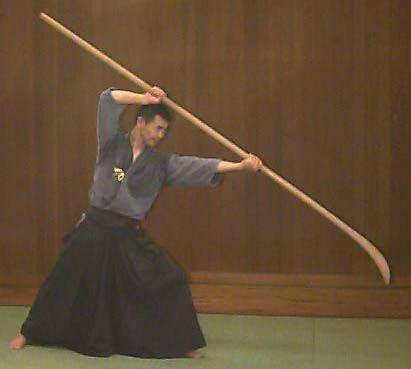
Naginata is a weapon with elongated rounded blade on the end. Once upon a time it was used in the war, then in the Edo period (1603-1867.) It was used to protect themselves from the women of the samurai class, and it was thought that this martial art they're supposed to learn. Today, they are predominantly women. Around 55,000 people have rank in this sport. There are two kinds of competitions: one participants earn points, strikes at parts of the body opponent, protected mask, gloves, bibs, hip and greaves, and the other in a prescribed order is executed a number of forms of kata. The length of the naginata used in competition, about 215-225 cm. At the competition by the end of the blade is attached bamboo, while demonstrations kata - made of oak.
Nippon Kempo
In 1932 Savayama Muneomi based on the ancient techniques of jujutsu, arrange them in a modern Nippon Kempo. Beats jujutsu (fists and feet), throws, locks protivohode and retention would be dangerous without protective devices. But with such devices as a mask, bib, mittens and nabedrennik "rivals" in training can engage in. Since Nippon Kempo martial thing with all modern Japanese martial arts, it is used in preparation for the fight unarmed personnel of Japanese police and defense forces. Some artists have become world champions in boxing or kickboxing. At Nippon Kempo about 500 thousand followers. Outside Japan it is known as "Japanese martial art.»
Kyudo (archery)
Kyudo or Japanese archery competitions which were held in the Kamakura period (1192-1333 gg.), Was the first Japanese martial arts, has turned into the sport, although the rules in those days were different. After the appearance of artillery and small arms military lost interest in the bow and arrow, but archery has remained the skill, mastery of which had to be a samurai. Gradually it became sports. Long bamboo bow used today, about 215-230 cm. Feathered arrows allowed in the target located at 28 or 50-90 meters from the shooter, and are counting score. Position of the body is very important, and archers blend smoothly together his movements when standing, sitting or bent their bow. Approximately 150,000 people in Japan have category on kyudo.
Sojutsu
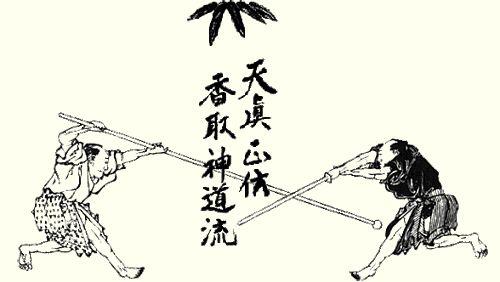
Spear was the main weapon used on the battlefields in Japan before the end of a period of civil unrest in the usual weapon of war has become artillery. Spear lunges, causing frontal and side impacts. Samurai were supposed to study the art of spear, along with kenjutsu, the art of swordsmanship.

Currently, Japanese Budo and Bujutsu words without much of a difference in the sense used to refer to a wide range of skills needed in the martial arts, to fight without weapons possession to the instruments resembling a sword or spear. But in the Edo period (XVII - the middle of the XIX century) Bujutsu and Budo words have quite different implications. Bujutsu called methods of warfare, and budo meant "the military option", the ideal way of life that must lead samurai wielding technique Bujutsu.
Fragment of Shinkage Ryu Heiho Mokuroku that opens the secret techniques of style sword Shinkage-Yagyu

Competitions in archery in Sandzyusengendo, Kyoto.

In those days there were 18 martial arts (Bugei jūhappan), which included archery, horsemanship, possession of knives, throwing spears, self-defense without weapons (jujutsu) and the gun strelbu.Praktika Bujutsu originated in antiquity. By the middle of the Heian period (X-XI cc.) Was born military class for the protection of newly acquired land and agricultural interests. This class of warriors took Bujutsu as part of their culture. Later in the Kamakura period (1192-1333 gg.), The military began to play a political role. They were engaged in a number of martial arts, especially the three types of horseback archery: kasagake (using umbrellas as targets), yabusame (transmission of the arrows on wooden targets), and Inu-Aumont (shooting at fleeing dogs).

In the Muromachi era (about 1333-1568 gg.) Bujutsu masters, who were called hёhomono or heyhodzin used his military experience, studying and perfecting the technique of martial arts. They have developed a number of new styles (called Ryu), for example, Ogasawara Ryu - horseback archery, Hackee Ryu - archery, Otsubo Ryu - horse riding and Aysukage Ryu - military strategy.
A number of other martial arts styles developed during the civil unrest, which lasted from the mid XV to the end of the XVI century. They included Tsuda-ryu - the gun shooting, Takenouchi-ryū - fight without weapons, and Kasimasinto Ryu Ryu Shinkage and Itto-ryu, which were based, respectively, Tsukahara Bokuden, Kamiidzumi Nobutsuna and Ito Ittosay to fight with swords.
Since the Edo Shogunate in the early XVII century united the country, followed the union of stability weakened the military spirit Bujutsu. Martial arts technique was improved through training, which mainly focus on kata (forms-or formal motions). It was believed that they will help to achieve the perfect state of mind based on the teachings of Confucius and Zen. Thus, the practice of martial arts has evolved from a simple study of the movements that helped master the fighting techniques, to strict training, promote a healthy spirit in a healthy body. In other words Bujutsu turned into Budo, which included and philosophy, supports the idea of a certain lifestyle. At a time when the samurai had to master the art of the pen as well as the art of the sword, budo was the ideal towards which the military class ought to strive.
Two famous styles possession of knives were Shinkage-Yagyu-ryu based Yagyu Muneёsi and Niteniti Ryu, Musashi Miyamoto developed. First school favored Tokugawa family, which at that time dominated the politics, it studied himself Shogun, Tokugawa Iemitsu.

Basic principles of swordsmanship were described in books such as Yagyu Munenori Heiho Kadensё (son Muneёsi) and Gorin but Sho Miyamoto Musashi. These classic textbooks explain the techniques of sword and describe the ideal state of mind and philosophical view, which should reach those who wields a sword.
By the middle of the Edo period (the end XVII - the middle of the XVIII century) over a long period of peace swordsmanship took the battlefield and become a practice ornate formal exercises. New schools in response to this situation, the emphasis shifted to exercise kata forms for training in the martial forms using chainmail and wooden swords (shinai). Two of these schools were Dzikisinkage Ryu Nakanishi Itto-ryu.
Self-portrait of the famous master of the sword Miyamoto Musashi.

The desire for political change and pressure from foreign governments lit a spark revival Bujutsu, which began with the end of the XVIII century. Soon STAP teach martial arts in schools, based in the feudal estates across the country. With the collapse of the Shogunate collapsed and strict class distinctions that allowed men to seize the sword, by birth does not belong to the samurai class. Dojo in different cities opened their doors to people from all over Japan who want to study Sintomunen Ryu Hokusin-Itto-ryu and other styles of swordsmanship. Organized competition in which opponents were different Ryu.

Engaged and Jujutsu (the art of fighting without weapons). Some of the famous schools existed -Takenouti Ryu, Kito-Ryu and Sekiguchi Ryu Ryu Esin. All schools professed ideal expressed in the phrase "Ju, ёku th of Sais," which can be translated as: "The weak can overcome the strong." Archery (Kyūjutsu) was the first martial art, has turned into a contest. Night and day competition was held on a long veranda Sanjusangendo temple in Kyoto. Archers stood at one end of the porch width of 2, 2 meters and shot arrows at a target at the other end, a distance of about 120 meters. This competition taken seriously because of the results depended on the honor fiefdoms archer. According to surviving records one of the retainers of the daimyo Tokugawa Kishu, Vasa Dayhatiro, could be sent to the far end of the veranda 8133 arrows with a total of 13 shots 053. This is a surprisingly high percentage, considering what a huge force is needed to release the arrow almost horizontally, so that it does not hit the ceiling height of 5 meters verandas. The best archers of the day it is difficult to hit the target even once.

Martial Arts in their sporting aspect
At the beginning of the Meiji era (1868-1912 gg.) Budo and Bujutsu almost disappeared. But in 1895 during a nationwide effort to revive the martial spirit was an association called Dai-Nihon-kai Butoku. Built in 1905, the school teacher training martial arts eventually became a school of martial arts. By 1882 Jigoro Kano had already established his own style of judo - - Kodokan, giving it a form of sport, based on traditional principles of jujitsu. Over time, kendo and judo introduced into school curricula, and in 1931 they became mandatory subjects for boys across the country. During the Second World War, the spread of budo in the school system was part of a campaign to introduce a militaristic nationalism. Budo ideals encouraged in military training.
At the end of the war, Japan was occupied by the Allies. Martial arts were banned in order to avoid a new upsurge of militarism. But since the 50s martial arts again introduced into school curricula and become a popular sport. Budo also attracted attention as a traditional sport discipline, developing and ma ki that contribute to such a state of mind in which the physical and mental sensations are in harmony with each drugom.Dzyudo - Competitive most of all disciplines. She became an Olympic sport and has many followers around the world. Kendo also gained international recognition, though his true goal is not to win but to promote & quot; the development of a healthy mind in a healthy body. & quot; Some schools - Aikido Shorinji Kempo and other ancient martial arts - not allowed to die tradition, promoting the practice of formal kata, other -more accentuate its military aspects. Workshops techniques of one of these schools, Daito-ryu Aikibujutsu Sagawa-ha, based Sagawa Yukiyoshi, - a combination of various Japanese martial arts (such as kendo, judo, spear and stick), they contribute to the manifestation of the essence of Japanese martial iskusstv.Kak see for many years martial arts developed as part of the Japanese culture and were influenced by the political events of his time. The most valuable aspect of Japanese martial arts - their ability to promote the comprehensive development of man through exercise, leading to mastery honed skills workshops, which are based on respect for the tradition, the years of creative thinking and creative action.
A wide variety of martial arts Kendo

Kendo - it is also a competitive sport. Bamboo "sword" (Sinai), the length of which is not more than 118 cm, rivals strike each other blows in certain areas, for which points are added. Used four types of protective devices - Maine (mask) to (breastplate), kote two (guards hand) and tare (thigh protector). Like fencing in Europe, the ancient Japanese art of swordsmanship today continues to live, becoming a sport. Fencers hold rapier in one hand, while in Kendo, usually both hands hold the Sinai. Kendo as popular in Japan as judo, it takes about two million people. As judo, he taught at the school, they are often engaged in outside school hours. International Kendo Federation was founded in 1970 and is now outside Japan Kendo takes about eight million people.
Judo

In 1882 Jigoro Kano developed Judo based on the ancient art of jujutsu. Judo - a form of fighting without weapons, in which victory can be achieved, for example, throwing the opponent, pinning him on the shoulder, caught on hold or by submission. The biggest difference from judo dzyudeyutsu is that jujutsu allowed pushes and punches and kicks, while in judo they are banned as dangerous activity.
Judo became an Olympic sport in 1964, in time for the 1964 Olympic Games in Tokyo. In Japan, about 1, 5 million people have given category in judo, but only in the world of judo involved more than 20 million people. Battojutsu (outcrop of the sword). Also called iaydzyutsu. One of ordinary movements consisted kenjutsu to instantly pull the sword out of its sheath and swing it in a cutting motion. This technique is being followed by many schools, for example, Hayashizaki Muso-ryu, which developed during the civil unrest. These schools still exist, and the school also taught kenjutsu this kind of exposure of the sword. In practice today, a real sword pererubaet exactly half a bunch of straw or a piece of bamboo, or perform a series of fluid movements with the sword. They say that the master can cut the half iron shlem.Dzёdzyutsu (cane)

Round cane is made of white oak, its length is about 128 cm. She lunges as a spear, side sweeps the legs as naginata or a strike like a sword. It developed in the Edo period as a way to defend against an opponent armed with a sword or other weapon without injuring him fatally.

Well known school Stdomuso-ryu, which still exists in Fukuoka Prefecture, she is undoubtedly the greatest number of fans. Of all the ancient bujutsu most popular is jojutsu. The police, with some modifications, adopted a style of ownership cane Sindomuso Ryu.
Kenjutsu

Kenjutsu or Japanese swordsmanship was born about 1200 years ago with the advent of the warrior class. In the Edo period there were more than 300 styles of kenjutsu. One of them, Kasimasin Ryu, now almost a thousand followers, they are also involved in overseas dojo. Many styles have already disappeared.
Japanese law prohibited from owning a Japanese sword as a weapon, so the workouts are used oak or bamboo swords about one meter long. Some bamboo swords covered with skin.
Shorinji Kempo

With Mitiomi learned fighting techniques, invented by Chinese soldiers, monks Zen Buddhist Shaolin Temple, and then, after World War II, developed these techniques into a new kind of martial arts. Apply sophisticated techniques that combine kicking and push. In training, protective devices are used, often used kontrpriёmy response. At competitions athletes wear apparel Zen Buddhist monks (as this practice is considered to be part of the training of Zen), and only show the form of kata. Shorinji Kempo takes about 1.3 million Japanese people and 150 thousand people in other countries.

Aikido

Aikido Ueshiba Morihei codified in 1922, based on Daito Aiki, one of jujutsu systems. The goal - to repel an attack, using its own power hitter. Many techniques are very complex and include the seizure of a brush, shoulder or other joint lock on an opponent in protivohode followed by cast or by pressure on the blades. Such techniques can be dangerous, so they practiced in training as prescribed. Competitions are rare.
Aikido is popular among women and the elderly, as is the art of protection does not require great strength. About 600 thousand people are engaged them in Japan and abroad, he has more 1.2 million followers.
Karate

In karate there techniques of attack and defense techniques. Methods of attack include lunges brush, fist and foot, as well as punches and kicks. They reflect the techniques of protection. Competitions are held either as a series of kata forms demonstrating various techniques, either as free sparring. In some schools of karate kata is not practiced.
Karate originated as a style of Chinese boxing, and on Japanese soil has developed in Okinawa. Up until recent times they engaged only in Okinawa, then after the Meiji Restoration (1868), it has spread throughout Japan, and then, after World War II and in other countries. In karate over 3 million followers in Japan and another 30 million worldwide.
Naginata

Naginata is a weapon with elongated rounded blade on the end. Once upon a time it was used in the war, then in the Edo period (1603-1867.) It was used to protect themselves from the women of the samurai class, and it was thought that this martial art they're supposed to learn. Today, they are predominantly women. Around 55,000 people have rank in this sport. There are two kinds of competitions: one participants earn points, strikes at parts of the body opponent, protected mask, gloves, bibs, hip and greaves, and the other in a prescribed order is executed a number of forms of kata. The length of the naginata used in competition, about 215-225 cm. At the competition by the end of the blade is attached bamboo, while demonstrations kata - made of oak.
Nippon Kempo
In 1932 Savayama Muneomi based on the ancient techniques of jujutsu, arrange them in a modern Nippon Kempo. Beats jujutsu (fists and feet), throws, locks protivohode and retention would be dangerous without protective devices. But with such devices as a mask, bib, mittens and nabedrennik "rivals" in training can engage in. Since Nippon Kempo martial thing with all modern Japanese martial arts, it is used in preparation for the fight unarmed personnel of Japanese police and defense forces. Some artists have become world champions in boxing or kickboxing. At Nippon Kempo about 500 thousand followers. Outside Japan it is known as "Japanese martial art.»
Kyudo (archery)
Kyudo or Japanese archery competitions which were held in the Kamakura period (1192-1333 gg.), Was the first Japanese martial arts, has turned into the sport, although the rules in those days were different. After the appearance of artillery and small arms military lost interest in the bow and arrow, but archery has remained the skill, mastery of which had to be a samurai. Gradually it became sports. Long bamboo bow used today, about 215-230 cm. Feathered arrows allowed in the target located at 28 or 50-90 meters from the shooter, and are counting score. Position of the body is very important, and archers blend smoothly together his movements when standing, sitting or bent their bow. Approximately 150,000 people in Japan have category on kyudo.
Sojutsu

Spear was the main weapon used on the battlefields in Japan before the end of a period of civil unrest in the usual weapon of war has become artillery. Spear lunges, causing frontal and side impacts. Samurai were supposed to study the art of spear, along with kenjutsu, the art of swordsmanship.






